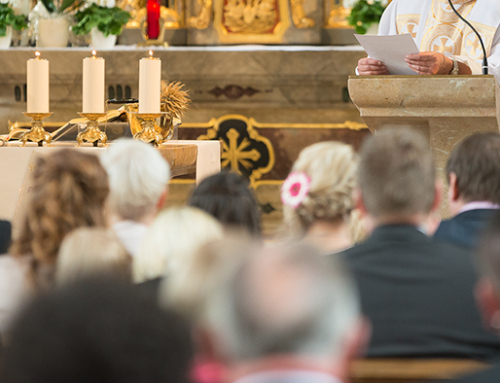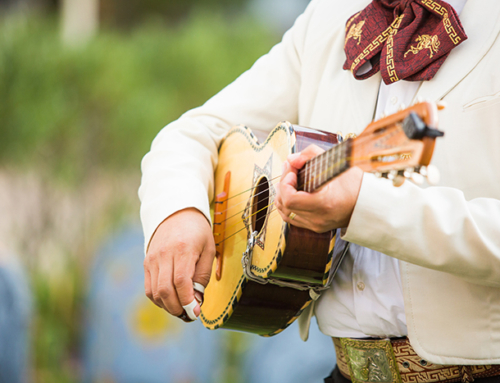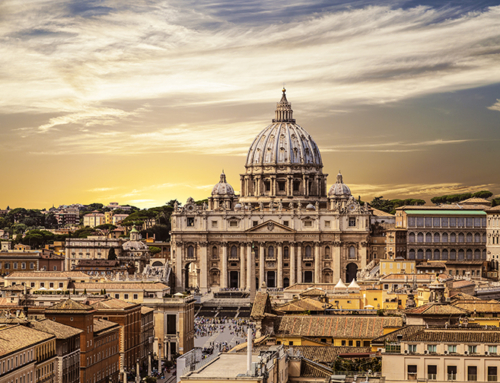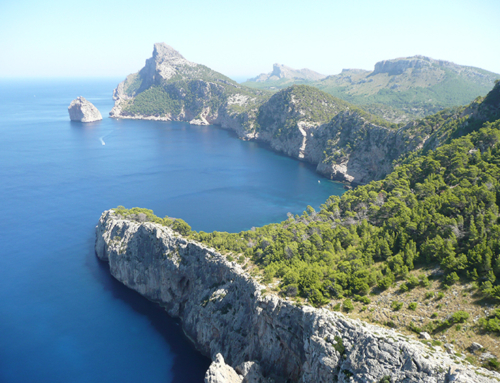The birth of the Cursillo came about as the result of the preparations for the Great Pilgrimage of 1948 to Compostela, the tomb of St. James the Greater. These preparations began in 1941, with many workshops (called “Cursillos” – short courses) to form the Catholic Action leaders. The notion of a pilgrimage to God began to be given greater theological emphasis. Personal-witness talks of the speakers’ own experiences of the Christian life were given.
These Cursillos were held in various parts of Spain, but it was at Mallorca that they would evolve into the Cursillo Movement as we know it today. This phenomenon is due to the leaders school which was developed for controlled experimentation, pastoral planning, and the deepening growth of the leaders in Christian community and to the dynamic leadership of the young Eduardo Bonnin.
The pilgrimage mystique has always played an important role in the life of the Spanish people, and it passed over into the Cursillo Movement which assimilated devotions to the Blessed Mother and to St. James the greater at the National Shrine of Spain at Compostela. Thus, many young cursillistas made pilgrimages to the Shrine of Our Lady of Luc on the Island of Mallorca in the early years of the Cursillo Movement.
However, the National Shrine of St. James of Compostela was the place of very great attraction for the Spanish people. One might say that ever since the Middle Ages it has been like Lourdes. Given the Catholic nature of Spanish nationalism and the militant crusading spirit, it is easy to see how a pilgrimage to the Shrine of Santiago de Compostela could have a certain kind of national and political importance.
Spanish Catholic Action leaders planned a pilgrimage of young people from Spain and the Latin American countries to Compostela. It was postponed many times, but finally in 1948, 70,000 young people came to the shrine. Supporters of the pilgrimage had at least three different agendas. Franco saw it as a means to achieve national unity and support for his regime; the bishops viewed it as a means to secure his Franco’s protection; and those involved in the planning hoped to bring about a spiritual renewal in all Spanish-speaking countries.
The military spirit inherent in Spanish history passed over into the Cursillo. Its early literature speaks of conquest, strategy, victory. Allegiance and obedience to the hierarchy were stressed. Good soldiers are marked by discipline and the acceptance of austerity that comes with war. The first Cursillistas were nearly all veterans of the Civil War, and they easily accepted the Cursillo’s military style. It must be said that a great contribution of the Cursillo to the Church was its emphasis on the lay apostolate as conquerors of the world for Christ and a willingness to accept whatever cost discipleship called for.
The Cursillo Movement was born on the Island of Mallorca when Cursillos were given to Pilgrim Scouts and Pilgrim Captains in preparation for the great Pilgrimage to Compostela, scheduled by Catholic Action for 1948. Soon young men who did not belong to Catholic Action began to attend these sessions. The Leaders’ School was also developed in this period.
In order to understand the Cursillo mentality, we need to identify the charism that makes the Cursillo what it is. We must define its identity. The same is true of the Church. It is always being called to be its true self. The individual Christian has the same vocation. The Cursillo Movement is a dynamic movement and continues to identified through such writers as Juan Capo, Eduardo Bonnin, and others, all identified with the Movement.
The first basic concept of Cursillos is its vivencial character for Christianity:
“Christianity is caught, not taught”; and “one must be led by the spirit as was Jesus.” Christianity cannot be reduced to a few intellectual formulae because God entered history and became one of us in the flesh. The second concept is liberation by first discovering what may be enslaving a person from a total surrender to God in Christ and living the Exodus theme of Sacred Scripture. “Each Cursillo that closes is a new life that opens. At that moment a new life begins.”
The third concept is the “Religious Experience.” Heads are filled with ideas and hearts filled with fire for living the life of grace. The fourth concept is Vertebration, which comes from the teaching of the Mystical Body. In the human body, the backbone is most important; it is composed of vertebrae that give nerve impulses to all organs of the body. In the Cursillo, the vertebrae are leaders, properly formed, living in grace, and linked together in a dynamic Christian community so that grace can flow into them and through them to the whole Mystical Body. The concept of vertebration came from a talk given by Eduardo Bonnin. It separates the Cursillo Movement from Catholic Action, as it pictures the layman as an apostle by virtue of his Christian vocation. He is to structure Christian community where he lives and works through friendship in a group action, often involving as few as two.
Pope Paul VI, in an address to the Cursillistas in Rome, on June 28, 1966, spoke of the Christian vocation – to follow the theological virtues of faith, hope and love and living out the Great Commandment in union with Christ. The Cursillo Movement speaks of this as “living a life of grace.” The Group Reunion, with its emphasis on piety, study and action, tends to keep the Cursillistas in the life of grace. The concept of Christian Community in the Cursillo vocabulary means “a group of baptized Christians living and sharing a conscious and growing life of faith, hope and love in union with the visible Church and striving to bring about the Incarnation of Christ into all sectors of society. By its very nature it must be a Christian Community in Action, a missionary church.” A final mark of the Cursillo is a triumphal concept of Christianity (but not triumphalism). It is a strong belief in the power of the Gospel and the grace of Christ to overcome evil. The following sentences are used in the Cursillo to express this concept:
(1) “I have told you all this so that you may find peace in me. In the world you will have trouble, but be brave: I have conquered the world.” (Jn. 33).
The Cursillo updates this point as:
(2) “Christ and I are an overwhelming majority.”
You might say that the leaders attempted to instill a spirit of optimism in the Cursillistas. The Cursillo literature of this period speaks of joy and victory. It quotes St. Paul: Now we know that for those who love God all things work together unto good (Rom. 8:28). It was from all of the above concepts that the Cursillo mentality took form in the 1940’s and spread to many other countries. These concepts form a Christian baptismal vocation and are basic to the Cursillo method, which has four parts.
The Precursillo involves the study of the environment, the selection of candidates, and the preparation for the three-day weekend. A select number of apostles are chosen in keeping with the papal letter of Pius XII, “Quamvis Nostra,” to be like the leaven in the Gospel.
There is considerable controversy as to when the first Cursillo as we understand it today was held. Since a discussion of this debate will not serve the purpose of this work, one might safely assume that the first one took place between the years 1944 and 1946 at Mallorca. This opinion is shared by the leaders of the movement today.
The Postcursillo comprises the Group Reunion, the Ultreya, and the Leaders’ School. The Group Reunioin is composed of a few persons (as few as two and as many as ten) who meet weekly in a spirit of friendship. They discuss their piety, study and action, or to use the new terms: holiness, formation and evangelization. Their action should concern the Christianization of their environments. Ideally, the members of the Group Reunion should come from the same environments.
The second element of the Post-Cursillo is the Ultreya. It is the weekly or the bi-weekly meeting of the various Group Reunions from a specified area. There are ten Ultreyas in the Pittsburgh Diocese. Those who attend, experience a Group Reunion, hear a short witness talk from another cursillista, and a few words from the spiritual moderator. They also receive support for their efforts to Christianize their environments. The Ultreya serves as a counter culture.
The third element of Postcursillo is the leaders’ school. It meets weekly, and it seeks to form leaders by teaching the Cursillo literature, Catholic doctrine and Catholic spirituality. From the leaders’ school, members are chosen for the diocesan Secretariat, which governs the Cursillo Movement and is responsible for its day-to-day activities. Ultreyas are governed by a small core of Cursillistas, called the Ultreya Council, who are encouraged to attend the leaders’ school.
What follows is in part a summary of some of the important events and characteristics of the Spanish culture that serve to make the Cursillo what it is: a successful movement in the apostolate. The Great Pilgrimage, though it had political overtones, was successful in its spiritual goals. It was important for Cursillo, since it created the climate in which the Cursillo could grow. It also created the mystique of the pilgrimage, which is an important part of the Cursillo mentality. It was Spanish militancy that gave Cursillo its thrust as conqueror of the world for Christ. This is both a uniquely Spanish contribution and a charism that is unique to Cursillo in the post-conciliar church.
Cursillo took much of its mentality, its method and even its vocabulary directly from Spanish Catholic Action. This prevented the Cursillo from being the creation of any one person. The Cursillos of Pilgrim Scouts led to the further evolution of the Cursillos for Pilgrim Captains, which in turn became the Cursillos de Cristiandad. Each of the basic concepts of Cursillo were consciously lived by the Cursillistas before the Great Pilgrimage.
From its development, it becomes apparent that the Cursillo approaches the apostolate existentially and modern man holistically. It operates out of a model that is not only theological, but philosophical, psychological, anthropological and pedagogical.
Although Eduardo Bonnin is the single most influential person in originating the movement, nonetheless the movement began in the bosom of a broad Christian community in action.







